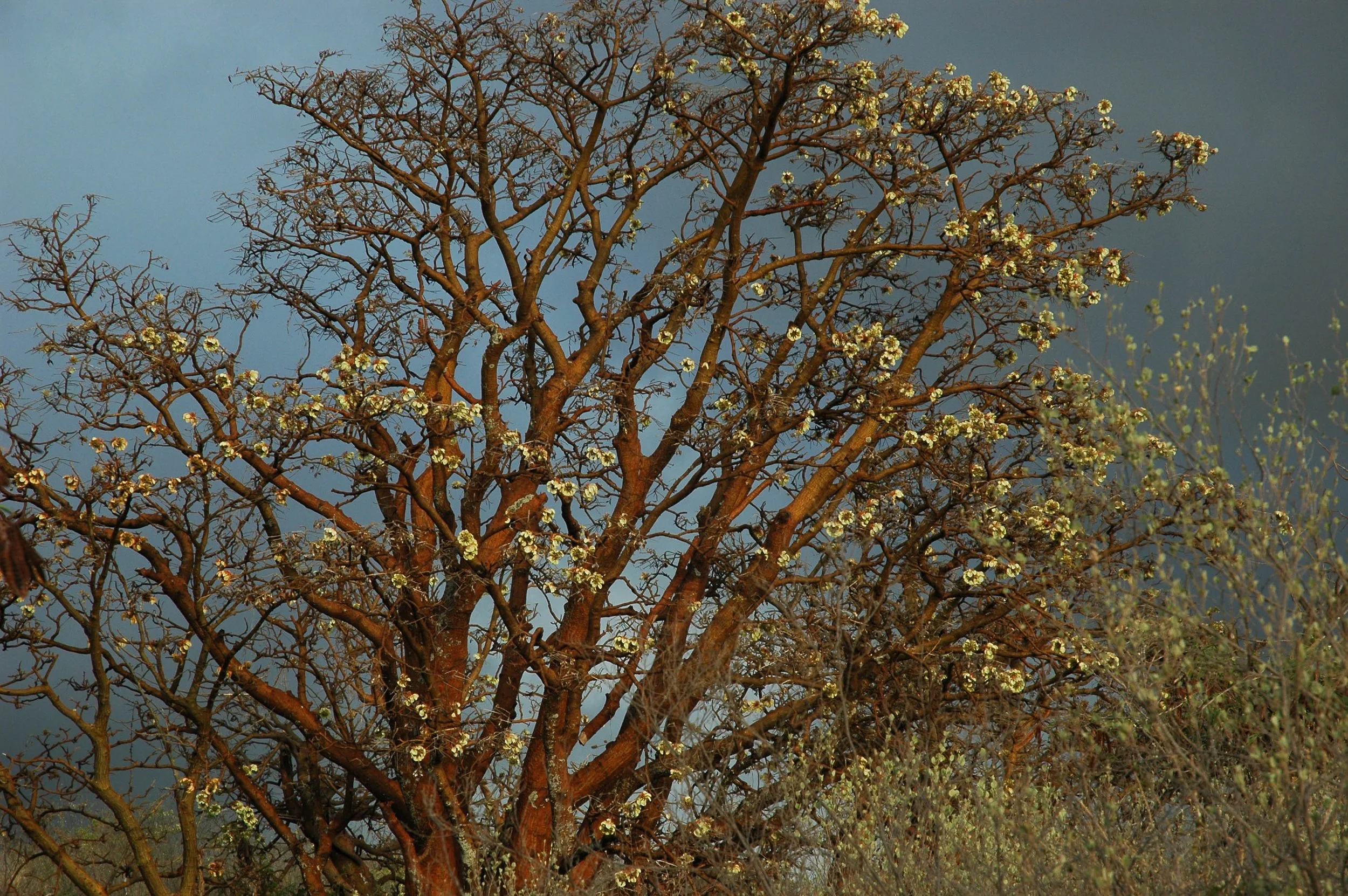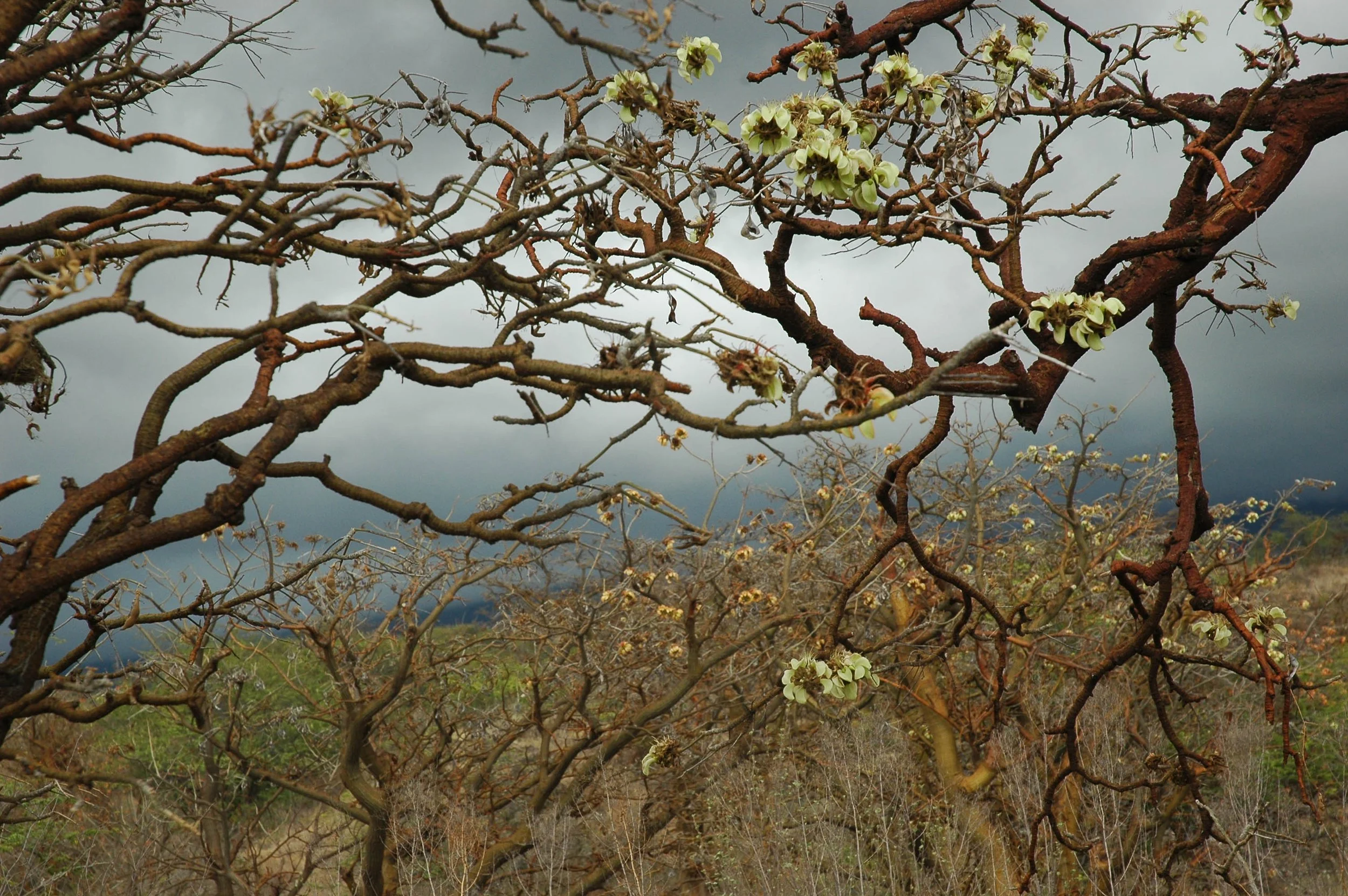A Place-Based Reckoning













In 2005, I was invited to join a small group of professional photographers on a rare assignment: to document the wiliwili forest at Pu‘u o Kali as its survival hung in the balance. We arrived with our camera equipment, telephoto lenses, macro lenses, tripods, ready to capture the native forest in all its radiant beauty. At the time, the gall wasp hadn’t yet reached this stand, but its arrival was inevitable. The tiny invasive pest had already begun devastating wiliwili trees (Erythrina sandwicensis) across other parts of Maui, and biologists feared the worst. Total collapse of this ecosystem felt heartbreakingly imminent. Dr. Arthur Medeiros, who was leading conservation efforts in the area, had asked us to photograph the forest as a kind of living archive, an urgent act of bearing witness before the storm.
Pu‘u o Kali was, and still is, one of the most visually striking and biologically intact dryland forests in Hawai‘i, rich with cultural history and ecological significance. At its heart stood the wiliwili: resplendently torchlit, sculptural, drought-adapted, and endemic to these islands. The gall wasp would soon lay its eggs in the trees’ leaves, causing grotesque galls to form and cutting off photosynthesis, cutting off life, branch by branch. The forest was in crisis, though it hadn’t yet fallen.
That day, I carried more than a camera. The forest was drenched in the last golden hour of sunlight, each wiliwili trunk standing like a vestige of baked pottery, deeply textured terra-cotta streaked with maroon, purple, red, orange, and yellow. Clusters of flowers glittered like jewels: some burst in fiery orange, others glowed soft chartreuse or lime green. The sky overhead was calm but carried stormy blue-gray hues, cloud cover filtering the sun into a diffuse glow that set every branch and leaf ablaze with color. It felt as though the world itself had paused to show its splendor. And yet, beneath that luminous beauty, there was a heavy undercurrent, the knowledge that this ecosystem teetered on the edge, its balance tipped not just by a gall wasp but by a long history of human indifference. Standing there, the hush, the radiance, the weight of moral responsibility, felt like holding something too large for one heart to carry.
I moved to Maui almost forty years ago, and in that time, I’ve worked as an arborist, designer, conservation advocate, and fine artist. My hands have been in the soil all across Maui Nui, tending native seedlings, propagating endangered species, and shaping sustainable landscapes rooted in ecological literacy and care.
Working with native Hawaiian plants has taught me about adaptation, survival, and the power of listening. The wiliwili at Pu‘u o Kali weathered the storm. Thanks to biologists and targeted biocontrol, the gall wasp is no longer unchecked, and the forest continues to vibrate with diversity and life. New trees rise in the shadow of the old, and I found myself wondering: what was I really witnessing? A forest being saved, or an inner transformation taking root in me? Resilience, I came to understand, was not only the forest’s, it was part of my own unfolding. To grow alongside the living systems we care for depends on who we are as we engage. Learning to collaborate is a fundamentally spiritual practice, guided by reciprocity and a deeper way of seeing.
In my studio, I carry those same lessons forward. Years of working closely with native plants and living systems taught me that the truth is in the land. I work with energy and impermanence, using foraged pigments and light-sensitive materials that shift with time and exposure, echoing the dynamic ecosystems I’ve helped tend. For me, art has a primal cadence, a way of staying in rhythm with the essence of a place and the universe. It helps me discern the patterns all around us and to let complexity be a teacher rather than a problem to solve.